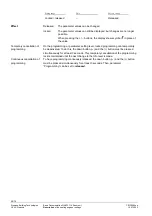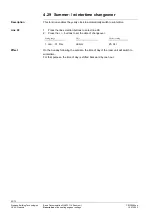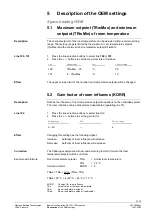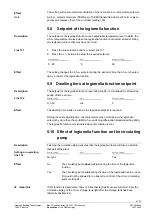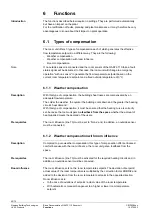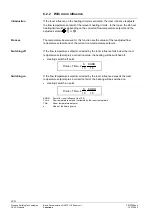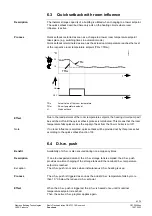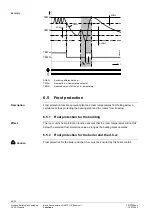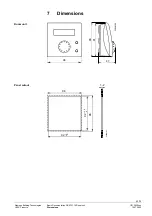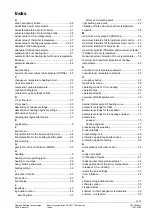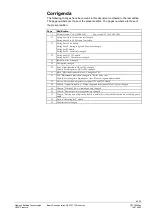
63/70
Siemens Building Technologies
Basic Documentation QAA73.110 Room unit
CE1P2284en
HVAC Products
Functions
10.07.2002
6.3 Quick setback with room influence
The thermal storage capacity of a building is utilized when changing to a lower setpoint.
The quick setback described here only acts on the heating circuits where room
influence is active.
Quick setback is started as soon as a change to a lower room temperature setpoint
takes place (e.g. switching times in automatic mode).
Quick setback is terminated as soon as the actual room temperature reaches the level
of the respective room temperature setpoint (TRx = TRw).
20
15
°C
t
TRx
228
4
d0
1
TRw
ON
OFF
H
t
TRx
Actual value of the room temperature
TRw
Room temperature setpoint
H
Quick setback
Due to the readjustment of the room temperature setpoint, the heating circuit pump will
be switched off until the quick setback process is terminated. This means that the room
temperature falls quicker since the supply of heat from the flow or boiler is cut off.
If no room influence is selected, quick setback will be provided not by this process but
according to the quick setback function 103.
6.4 D.h.w.
push
Availability of d.h.w. is also ensured during non-occupancy times.
If, due to unexpected demand, the d.h.w. storage tank is emptied, the d.h.w. push
provides one-time charging of the storage tank until the nominal d.h.w. temperature
setpoint is reached.
The d.h.w. push is not active when instantaneous d.h.w. heating is used.
The d.h.w. push is triggered as soon as the actual d.h.w. temperature falls by more
than 10 °C below the reduced d.h.w. setpoint.
When the d.h.w. push is triggered, the d.h.w. is heated once until its nominal
temperature setpoint is reached.
Then, the active d.h.w. program applies again.
Description
Process
Effect
Note
Benefit
Description
Exception
Process
Effect


